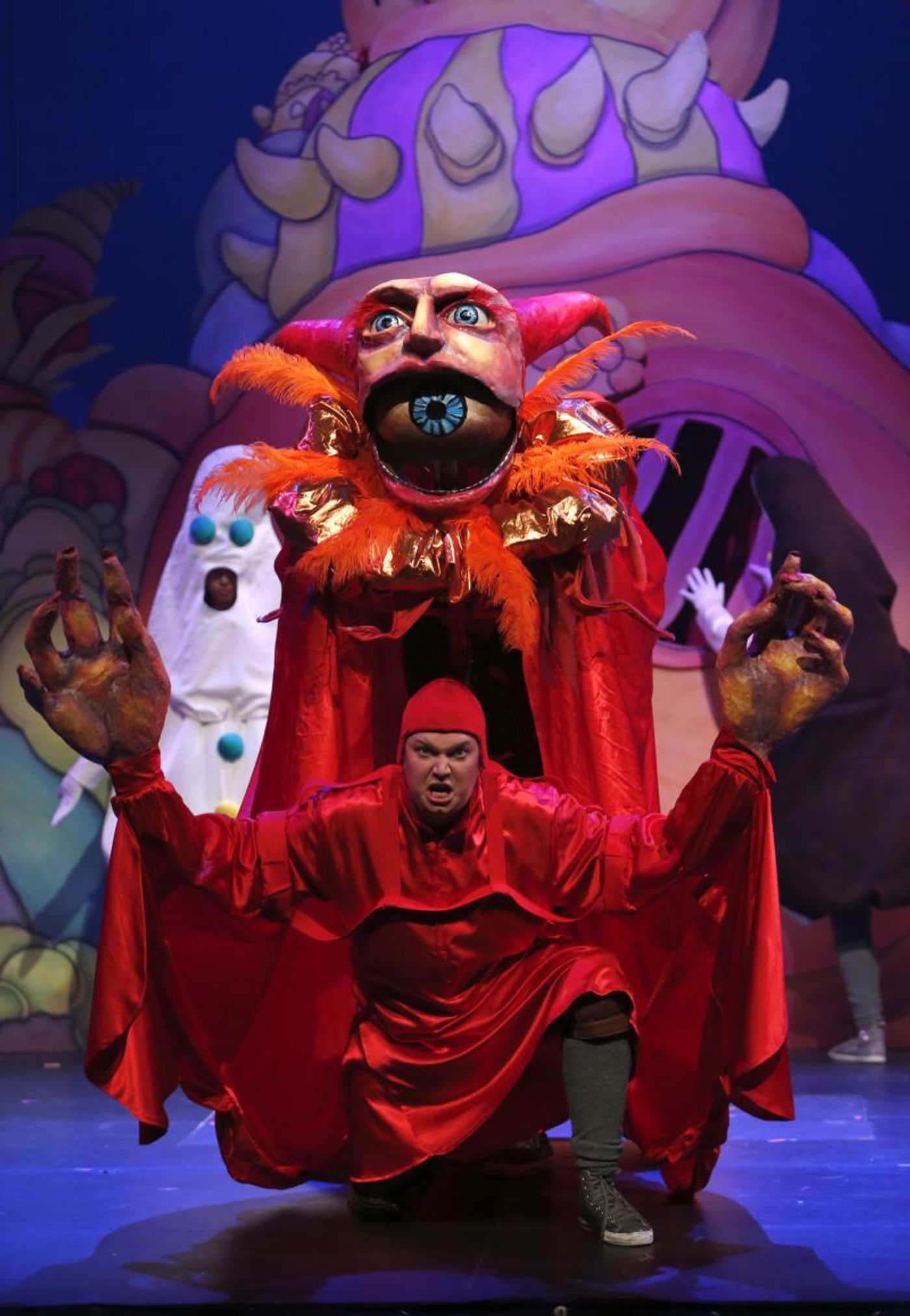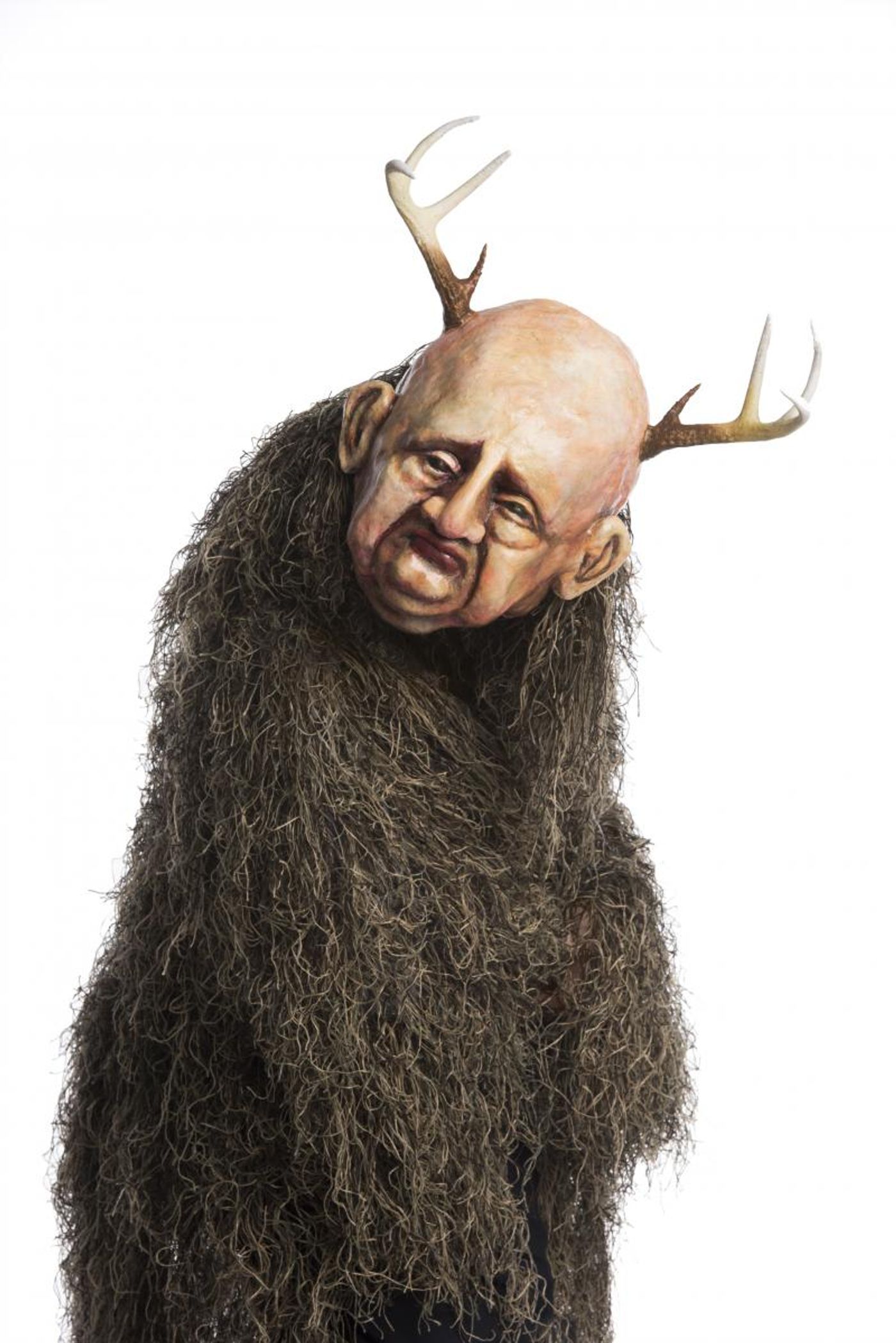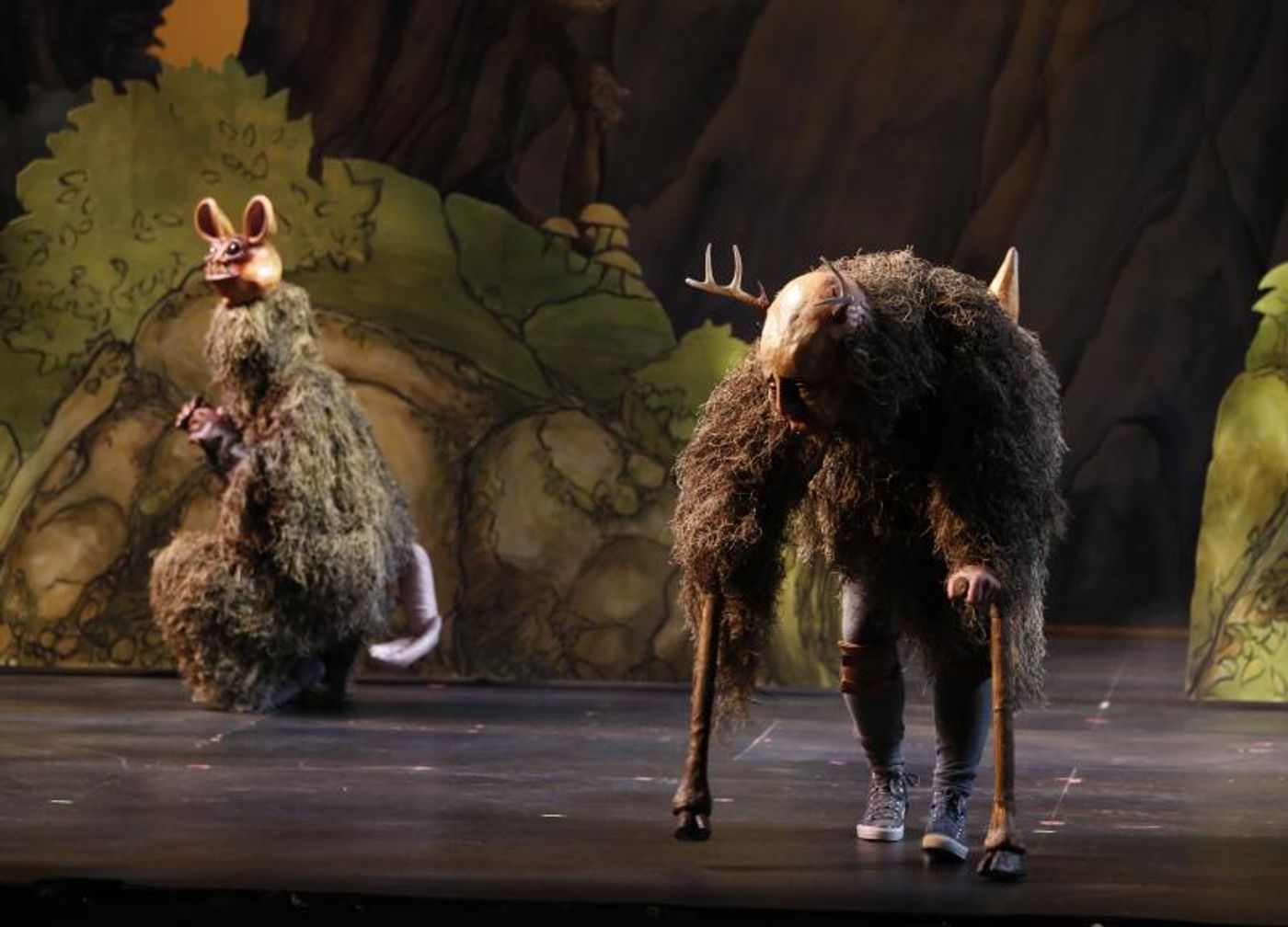Interview: Ari Pelto of San Diego's HANSEL AND GRETEL at the Civic Center
Conductor Ari Pelto will make his San Diego Opera debut on Feb. 8, 2020

Conductor Ari Pelto will make his much-anticipated San Diego Opera debut on Feb. 8, 2020, in their highly imaginative production of Humperdinck's beloved Hansel and Gretel. Described as "highly individual" in his interpretations, Pelto has been much in demand in opera houses and with symphony orchestras throughout the United States, Europe and Japan.
Appointed assistant conductor of the Spoleto USA Festival at the tender age of 24, Pelto's subsequent array of professional accomplishments includes a stint as assistant conductor of the Florida West Coast Symphony, guest conducting the Florida Orchestra and leading tours of Western Opera, San Francisco Opera's prestigious touring company. In 2015 Pelto was appointed Music Director at Opera Colorado, his current home base.
Erica Miner: Congratulations on your San Diego Opera debut!
Ari Pelto: Thank you!
EM: Tell us about your background. Where did you grow up?
AP: I was born in Hartford, Connecticut, and grew up mainly there. My parents were anthropologists, so I had some stints in other places, including the very north of Finnish Lapland, a reindeer herding community. I lived in Mexico when my parents had a project there, in the countryside, in an Indian village, also in Mexico City. My parents were professors at the University of Connecticut, which is closer to Boston than New York, so my orientation was to Boston once lessons started. Now I've lived in New York for 20 years.
EM: You studied with Imre Pallo, who I worked with at New York City Opera, a wonderful conductor and musician and person.
AP: Yes, I couldn't agree more. I love hearing the connection with Imre. I worked a lot at City Opera and knew lots of people who knew him and am happy to know someone who knows and appreciates him.
EM: He must have been a wonderful teacher.
AP: He was more than a teacher. He was really my mentor-a great mentor. Conducting is a strange pursuit. It took me a long time to figure out my path. I went from one teacher and country to another. I was in Finland, in Israel, a violinist, trying to find my way and not really knowing how or where to go. When I found Imre at Indiana University it was a major, extremely important moment in my life. Suddenly I had someone who believed in me, who I admired. It was a lucky, fortuitous match. He also was extremely generous. He gave me many opportunities to conduct at Indiana at a time when generally conducting teachers had been very parsimonious with giving out performances [Laughs]. Imre almost always gave me a performance at the end of his run-I was assisting him-and he was also instrumental in getting me to City Opera. He made those connections.
EM: Teachers and mentors are such a huge part of our lives as musicians. There's usually one key person on our path who helps pave our way. It sounds like Imre was the one to do that for you.
AP: I had two of them. The first was my first important violin teacher in Boston, Sophie Vilker, without whom I never would have gotten to Imre. She was instrumental in getting me on the right track before I had a sense of what it took to be a violinist [Laughs]. My Saturday music and Youth Orchestra were in Boston.
EM: What was your journey to the world of opera?

AP: Two things happened almost at the same time. I played in the Spoleto Festival Orchestra, both in Charleston and in Italy, when I was 19. It happened to correspond with a problem I started to have in my hands, psoriatic arthritis, which meant that I lost almost all of my fingernails on my left hand. So I had to stop playing.
EM: Ouch.
AP: Besides stiffness in the joints, it's incredibly uncomfortable and awkward and awful to play without fingernails [Laughs]. Those two things happened almost at the same time. The reason they were significant and connected was, I loved playing in the pit. When I had to stop playing violin, at the time I basically was stopping for about a year, until the medications helped the fingernails to grow back and the swelling in my joints got better. But at 19 or 20 years old the insecurity of not knowing what was going to happen with my hands, I absolutely was unwilling to risk it. I needed to do something else and conducting seemed logical. Years later friends from older times said, "Oh, you were always interested in conducting." I don't actually remember that and I'm not sure I totally believe it. I was a totally serious violinist. Nonetheless, conducting did make some sense, having just played in Italy. I always had a love of languages. I lived in Lapland-my father spoke to me in Finnish when I was a kid-and Mexico. So language was already a big interest. Being in the theatre was intoxicating for me, particularly in the pit. To this day it's my favorite place in the world. When I started to study conducting, I studied symphony et al just as a normal student would, but I did have a special pull toward opera. I didn't completely quit violin even when I went through that period, and I did go back to Spoleto twice more to play. When I was 24 I auditioned for then Spoleto music director Spiro Angiris as a conductor, saying I no longer was able to play, and that was my transition professionally, my first official job, though I had lots more studies to go before I became anything like a real professional conductor [Laughs].
EM: It must have been exciting to be conducting at Spoleto at such a young age.
AP: It was. Now when I think back on conducting big rehearsals of Fidelio at 24, I think I didn't know what I was doing at all [Laughs]. Spoleto was such a rich musical experience generally and yes, for it to become my first professional connection was big.
EM: You also do symphony and ballet. Is opera at the top for you, or do you love them all equally?
AP: I love all of them but if I had to choose, if somebody said I could only do one of those three, it would be opera. It is still the one I'm most attached to because of what I've described. I love language, and being in the pit, I love drama, collaborating with directors and singers, the enormity of the process and how much there is involved in it. A Brahms symphony is one of the great things you can ever experience, and ballet is wonderful too, but if I had to choose it would be opera. It's 75% or more of what I do.
EM: And it is the ultimate combination of all of those things. No other art form like it.
AP: As a conductor one thing that's lovely about opera-it's true in ballet to some degree, maybe slightly less-but you're rather needed in the opera pit. It's good to feel useful!
EM: Playing at the Met, with all the many rehearsals we had, watching the greatest artists at work, I realized opera is the ultimate in almost every way.
AP: What you're describing is what it was like in Spoleto, too. For Meistersinger I think we must have had at least 8 orchestra reads and 4 string sectionals. That was incredibly meaningful to piece things together, practically phrase by phrase with singers onstage. One of the things that is central in my life, is advocating for understanding between the pit and the stage. For example, as music director in Denver, I have my own orchestra, do a lot of the casting. I know the chorus very well and the artists who come. Whenever I talk to board members, donors or interested people, I try very hard to get them to understand the connection between what's happening "up there" onstage and "down there" in the pit. I believe no performance can be transcendent if there's not a true connection between pit and stage. You can have good performances, hear wonderful things with fabulous singers or a wonderful orchestra or combination of the two. But you can't have a transcendent experience in the opera house unless the orchestra and stage are connected deeply. Often in other places I'll have only 2 rehearsals with the orchestra and a sitzprobe to bring it together. It's barely enough time for stage and pit to get acquainted. That's the world we live in. With the orchestra I find myself advocating for the singers and trying to get the orchestra to understand what they have to do, and for the singers to try and understand what it's like for a second violin to have a book of music in front of them with a lot of eighth notes or offbeats and to understand the discrepancy in their experiences. With singers we spend 6 hours a day, talking about every phrase and working on a dramatic understanding, not to mention that many of them may have sung these roles for years. That intimacy with every aspect of their material is so different from somebody coming into the pit and having maybe played something several times, but still with only a skeleton of understanding how to connect everything that's going on word by word on the stage. Making those two worlds go together as quickly and coherently as possible, is everything.

EM: It takes an exceptional conductor to make that connection, especially in Humperdinck's Hansel and Gretel, which people tend to underestimate. It's Wagnerian orchestration, with difficult passages, a lot of notes to play. Though it's a gorgeous piece.
AP: It's juicy and delicious. You can have a great experience just with the orchestration itself. It's a major symphonic score. And so beautiful.
EM: And emotionally affecting. But more playable than Wagner.
AP: The connection with Wagner is interesting. I've played Hansel and Gretel a long time ago, at Oberlin. I've conducted it twice. When I was first doing it I thought a lot about how much it's like Wagner and in what ways it's essentially different. Tonally it's irresistibly like Wagner-the sound, the texture, clearly connected. But I also feel there's an extremely important difference. It's still a children's story, but where Wagner is epic, Hansel and Gretel is connected to fairy tale, not to the gods, although it has an eternal quality as fairy tales do, the weight of it is essentially different. That's hard because, as you know from playing it, it feels almost the same as Wagner. You have to sustain the sound, it's seductive harmonically in all the same ways. Yet I do feel it has to have a lighter touch capture something essential about Humperdinck's music, the feel of the story itself.
EM: And vocally it's completely different.
AP: Right. You have some singers who could potentially cross over, the father and mother are voices that you could use a Wagnerian singer for. But no, it's got to be light on some level or it's not a fairy tale. By light I don't mean frivolous, but you need to move in a certain way that has a childlike quality. The other thing is that the gestures evoke childhood outsized experiences. For these kids to be frightened in the woods it needs to have a very visceral, clear childlike and therefore also exaggerated sense of the expression of darkness or fear, the Sandman coming and so on.
EM: The child's imagination.
AP: Yes. And those I think are definitely some essential things different from Wagner. But it's certainly connected, nonetheless.

EM: You've done much standard repertoire but contemporary as well. For instance, you premiered Lori Laitman's Scarlet Letter. What was it like, premiering the piece in Colorado and recording it for Naxos?
AP: It was a very interesting experience. Lori is highly collaborative. It was initially scheduled for 2013. The premiere was put off by about 3 years, for a variety of reasons. Coincidentally it happened to be when I was first coming onboard at Opera Colorado. We reassured people who were afraid it was never going to happen that we were planning to do it for sure. Then it had to be recast. Several of the original cast had taken other gigs. Laura Claycomb had more of a dramatic coloratura, higher than Elizabeth Futral, the original Hester. From the first, she and Lori collaborated a lot. We all did, nearly every day, sometimes moving the range up when warranted. Same with Malcolm MacKenzie, the Chillingworth. That aspect was hugely interesting. Lori was there every day through the whole rehearsal process. We talked a lot about the orchestration. The score has an interesting weight to it. I think she originally conceived it lighter, kind of woodwind heavy but lots of solo lines. The hall in Denver is not small. It felt like it needed more doubling, substance. But at a certain point we had to stop making changes [Laughs]. It was very collaborative, all the way to dress week.
EM: Reading about it, sounds like everything turned out beautifully.
AP: We were extremely happy with it. The audience responded well. The recording came out quite good.
EM: What is coming up for you after San Diego?
AP: Right now I'm on my way to Chicago to do a concert at the Lyric with their young artists, a potpourri, the end of Rosenkavalier, fountain scene of Pelléas, meant to be a showcase for the Ryan Center. I'm in the pit, each scene is staged.
EM: That's wonderful repertoire for young singers.
AP: Very fun but also kind of difficult to spend 5 minutes on Debussy then change to Donizetti. It has its challenges. Then I go to start rehearsals in San Diego for Hansel. Right after that, Pagliacci in Denver, then Tosca in May.
EM: Everybody is really looking forward to having you in San Diego, for sure.
AP: Thanks so much, Erica, for taking the time. I really enjoyed talking to you. It was a lot of fun.
EM: Likewise. Thank you, Ari!
San Diego Opera's Hansel and Gretel runs from Feb. 8 - Feb. 16 at the Civic Theatre (https://www.sdopera.org/season/2019-2020-season/hansel-and-gretel).

Videos

